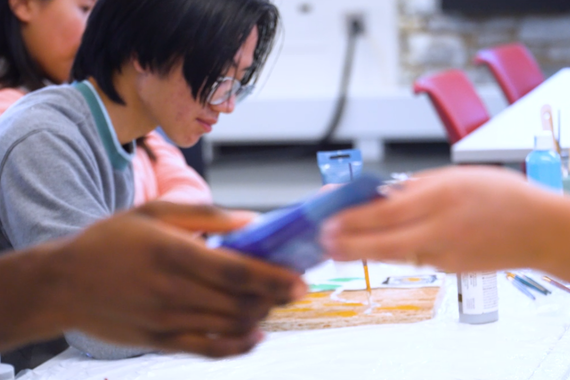Raza Sí, Migra No: Immigration’s Past and Future
“I’m from Houston. Third generation Houstonian,” Jimmy Patiño says. He recalls a childhood of hearing stories from his grandparents about growing up during the segregation era. His grandfather served in the US Navy in World War II, and told young Patiño about his experience returning home from the war to a segregated society.
“As a student I didn’t hear that Mexican-Americans were, [in fact], subject to similar Jim Crow policies that African-Americans were subject to in places like Texas,” Patiño says. “So that really called me to be a historian, and go to graduate school, and want to do work in excavating these kinds of stories.”
He attended the University of California, San Diego, where he initially studied African-American and Latino solidarity movements based on the cultural politics of hip-hop music in Houston. But when veteran activist Herman Baca sold his papers to UC San Diego the same year that Patiño arrived to the school, Patiño was encouraged by professors to investigate.
“A big issue in the papers was the way the Chicano movement dealt with issues of immigration and moments of violence that came from especially the border patrol. I had not seen that before, in terms of the Chicano movement and its relationship to immigration issues,” Patiño says.
A Decade in the Making
The book is Raza Sí, Migra No: Chicano Movement Struggles for Immigrant Rights in San Diego. According to Patiño, it’s the first full-length book that solely focuses on the Chicano movement of the ‘60s and ‘70s and its relationship to immigration.
“‘Raza sí, migra no’ basically means, ‘Our people, yes, the border patrol, no,’” Patiño says. “It was a chant, and a slogan, and I argue that it’s a politics—it’s an identity.”
Raza Sí, Migra No has been in development over the past decade: through Patiño’s dissertation, graduate degree, and PhD. Now an assistant professor in the Department of Chicano & Latino Studies, Patiño saw his book released in November 2017.
Within the book he presents the perspectives of working-class Mexican-American and Mexican immigrant communities at the border. He examines how different activist organizations from the late ‘60s to the mid ‘80s debated the problem of undocumented immigration, and how they came up with solutions.
By delving into the past, Patiño is hoping to shed some light on the present.
Relevancy Today
“It looks very cyclical,” he says, regarding recent changes to US immigration policy. “We’ve been here before. It’s not new.”
For example, Patiño examines deportation. He looks at how increased deportations and policing mechanisms at the border lead to increased violence against immigrant communities by border patrol or local police. But law enforcement as a solution to immigration issues seems to be one of the few things that Democrats and Republicans agree on, he notes.
“They agree on that basic tenet: that deportations are part of the solution, and that law enforcement is part of the solution, too,” Patiño says.
He’s hoping his book will help to further extend the debate and suggest different solutions. Patiño also hopes to continue researching different areas of history that will help contextualize the current state of immigration policy in the United States.
He may turn his focus to the ‘80s and ‘90s, when activists were discussing the complete abolishment of the border patrol. Or perhaps the early ‘30s, when activists argued that undocumented people were owed legal standing on the grounds that the infrastructure of the Southwest was built largely as a result of their labor.
“I’d like to look more broadly at the national movement—how different activists in different cities were reacting to these kinds of issues, and what kinds of solutions that they had.”
In the Community
But for Patiño community activism is not just something he studies, it is something he practices. Community engagement and advocacy is central to the ethos of the Department of Chicano & Latino Studies and, as such, faculty work with the department’s official community partners like charter schools Academia Cesar Chavez and El Colegio, which are both oriented toward Latino students. Academia Cesar Chavez was indeed started by one of the founders of the Department of Chicano & Latino Studies at the University of Minnesota, Ramona Rosales.
With these community partners, the department holds celebrations such as Mira Mi Corazón, an event where both community members and professional artists design heart-themed art that represent aspects of love and social justice. The art is auctioned off to raise money for funds and scholarships for students both at the charter schools and here at the U.
“That’s a key practice with ethnic studies and Chicano studies,” Patiño says. “To tie our work to the community, so it’s not just scholars talking to each other. We’re also talking to people outside of campus.”
He ties that commitment to community back to his book. “Spring of 2006 was a moment of some of the largest marches in the country, that were against an attempt to criminalize undocumented immigration,” he explains. “At one point, I found myself marching with 25,000 people in San Diego. And there were reports of half a million folks marching in Los Angeles, all for immigrant rights. All those things came together and I felt like I needed to tell these stories that were in these archives. That’s what inspired me to write the book.”



